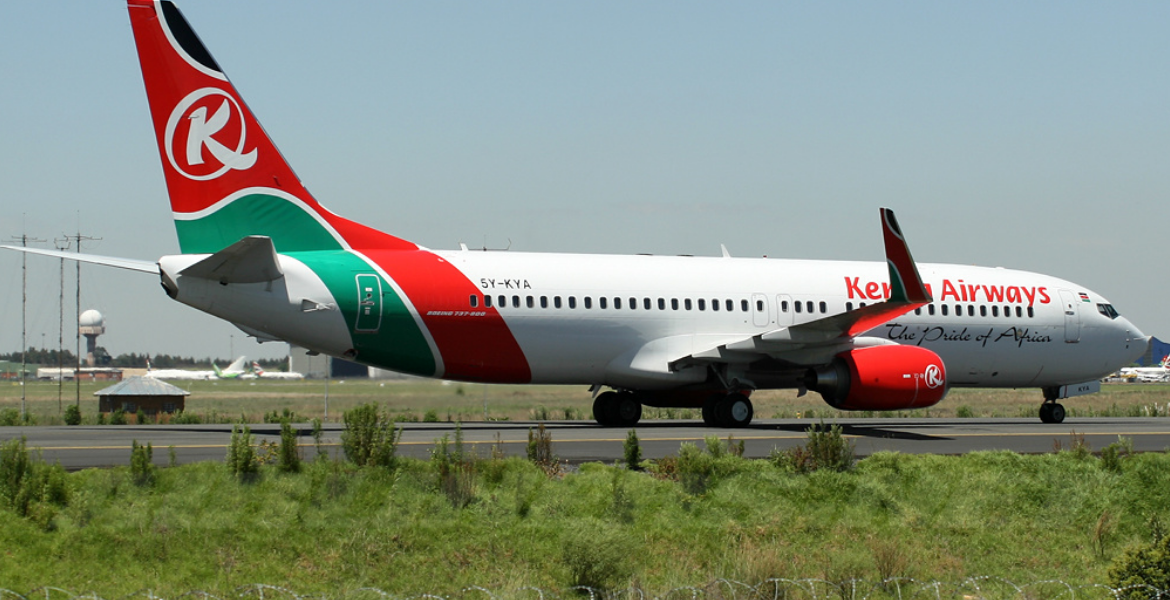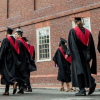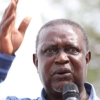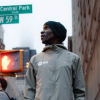Kenya Sends First Batch of Teachers to the US Under State-Backed Scheme

Kenya's ambitious initiative to send teachers abroad has gained significant traction with the government sending the first batch of teachers to the US.
Ambassador Isaiya Kabira, serving as the Secretary of Investments and Entrepreneurship, yesterday presided over a farewell ceremony for the inaugural group of educators destined for the United States. This move is in line with the State Department of Diaspora Affairs' commitment to enhancing the welfare of Kenyans living overseas and providing comprehensive support during their transition period.
“In line with the mandate of the State Department of Diaspora Affairs to promote the welfare of the Kenyan diaspora, the recruitment initiative offers comprehensive support during the transition period through pre-departure sessions,” the statement from the Department reads.
The State Department has indicated that more teachers will be deployed to various countries in the near future. This follows a February 2024 assessment that highlighted an increasing demand for Kenyan educators both within Africa and beyond. This initiative is part of a larger effort by the Kenya Kwanza administration to export workers to countries with which Kenya has established bilateral labour agreements, including Saudi Arabia, Oman, Germany, and the United Arab Emirates.
On February 3, 500 migrant workers were sent abroad, further demonstrating the government's commitment to this strategy. The department lauds the shift as a significant departure from overseas employment that saw a majority of Kenyans accepting unskilled or semi-skilled positions. President William Ruto has reiterated his ambitious plan to export up to 5,000 skilled and semi-skilled workers on a weekly basis. This goal not only showcases Kenya's growing pool of talented individuals but also positions the country as a significant player in the global skilled labour market.
Meanwhile, Kenyans have raised inquiries about the nature and implications of the government's negotiations for Bilateral Labour Agreements with multiple countries. The National Employment Authority Integrated Management (NEAIMS) platform currently showcases thousands of job openings spanning diverse sectors. Kenyans lament that many roles involve service-oriented tasks like housekeeping, caregiving, and maintenance with few opportunities for more specialized positions.
Many Kenyans express unease that those accepting jobs abroad may receive lower remuneration compared to their counterparts from other nations. Beyond pay disparities, some citizens have questioned the prudence of the government's agreements with countries where Kenyans have previously faced harm or lost their lives.





Comments
Kenya has a shortage of…
Permalink
Kenya has a shortage of teachers.
The American education system has its own issues like children shooting teachers and shooting their own classmates.
Kenyans should stop this…
Permalink
In reply to Kenya has a shortage of… by William Ruto I… (not verified)
Kenyans should stop this culture of lies and jealousy.Why can’t you go back to Kenya and partially solve the problem of teacher shortage.Insecurity is a problem in every country although it’s worse in Kenya.
If that doesn't prove OBAMA…
Permalink
If that doesn't prove OBAMA is running the show nothing will. We are not blind!
So true! Obama runn̈ING…
Permalink
In reply to If that doesn't prove OBAMA… by Chris (not verified)
So true! Obama runn̈ING things
Who cares who is running the…
Permalink
In reply to If that doesn't prove OBAMA… by Chris (not verified)
Who cares who is running the show? Of you haven’t learned the principles and values of the Gen Zs, then, you will never understand!
We could care less! Many teachers, nurses etc here in Kenya are TOTALLY unemployed! Let them try their luck in any country that’s save to work in and do not discriminate “much”!
Everyone knows Obama has…
Permalink
Everyone knows Obama has been behind Biden and Biden is just finishing what Obama didn't get done his 8yrs in office.
While the exportation of…
Permalink
While the exportation of teachers for a greener pasture is welcomed to other countries, the USA should be a no-go zone. The innocence, the dismal preparation and the excitement of these teachers right now is understood. My fears are that am sure they were not prepared for the tasks ahead, especially those coming to the US. For primary school teachers, they won't be allowed to teach even at the kindergatens without a mandatory degree.
Am praying also that the organizers prepared them on the following:
1. That American students do not stand up when the teacher enters the classroom.
2. That there is a run-away class control that is not easy to achieve.
3. That the a e i o u is not applicable in American classroom and that they will end up being students themselves.
4. That they should frequently us terms such us "excuse me," "please sit down," "am sorry," etc, which a Kenyan teacher is never familiar with.
5. That American student are NEVER shouted at.
6. That they can never discipline a child the Kenyan way.
7. That they must polish and debrief their Kenyan tongue and deep accent before hand.
8. That in high school, they should watch out for unruly, indiscipline, disrespectful teenagers.
9. That some terminologies like, "It doesn't make sense, Sir," "What did you just say?" etc is the norm.
10. That in high school, failure to award with a good grade is tantamount to a student coming with a weapon to force you do so.
11. That unlike in Kenya, American student has more rights than teachers.
12. That the school principals, in most cases are not in aid of teachers when juveniles run amok.
13. That being not "nice" to them could end up being attacked on their way home, their cars vandalised or covered with graffittis, or scratched etc.
14. That when left with a student in the class, the doors must be left open.
15. That touching a student inappropriately, laying your hands on them, hurling or shouting/screaming at them will warrant a visit by a cop.
16. That American culture of fake smile is not a signal that they love you or are submissive to you.
17. That a student can easily land you in jail in a flip of a second, unlike in Kenya where teachers get away with unbecoming behavior.
18. That they should hold their Kenyan anger and rage at all times.
19. That a 3hrs exam is completed in less than 30 minutes.
20. That since there are no school uniforms, male teachers should control their lust when girls walk around bare-chested especially during summer.
21. That in summer, you do not ware heavy jackets, headgear, gumboots, etc; and in winter, you keep yourself warm.
22. That you must build your credit overtime to own anything. That failure to pay debts results to debt collectors mining a chunk of your paycheck.
23. That you should always talk less, that out of 100% of running your mouth, only less than 9% is digested.
24. That your fellow Kenyans in America have a unique and weird characteristics, so dont get excited when you bump eg. MaCdonald, BurgerKing,etc. If they dont initiate a chat, walk away like an ostrich.
25. That it takes at least 2-3yrs to settle down.
WELCOME TO AMERICA!! Where hard-work pays off.
Mjuaji - Now that is a…
Permalink
In reply to While the exportation of… by MjuAji (not verified)
Mjuaji - Now that is a comprehensive analysis of what to expect. You should write a book on this stuff. Ati Walk like an Ostrich - hapo I do not even bother to try small talks, I hear a Kenyan accent or a certain look - I walk very far!
Something here doesn't add…
Permalink
In reply to While the exportation of… by MjuAji (not verified)
Something here doesn't add up. Unless I'm mistaken, you must be credentialed to teach in most states and must obtain a teaching license which requires the bachelor's from an accredited institution that you mentioned. Just for starters in my state, you do a teacher prep course, provide an approved program verification form, demonstrate professional competencies in the subjects by completing 24 semester hours of course credit or pass the relevant state board of education approved content assessment. Starting wages where I live are good but housing isn't affordable and you need a car. How they will teach with a Kenyan accent as students stare and disrespectfully ask them to repeat again will be worthy of a video. I wish them luck but I fear they are being thrown to the wolves.
Mjuaji-your work is to teach…
Permalink
In reply to While the exportation of… by MjuAji (not verified)
Mjuaji-your work is to teach and go home.... bear little frustrations as you all know that we are Kenyans how many times have our own students ill behaved and nothing we got in return rather than peanuts...
Twende America
Hapo umeweza spoken like a…
Permalink
Hapo umeweza spoken like a Kenyan teacher/student.Rule number 19 especially gets me.Those students who fly through exams and score zero .In Kenya even when clueless we will vumilia the 2 hours in silence and hand in a blank sheet .As for rule 20 am sure you meant barely there mini skirts with no draws am yet to see bare chested students that surely is a bit much.Goodluck to the Kenyan teachers you can document your adventures on you tube.
The East African Magazine…
Permalink
The East African Magazine
Airlifts of US: The first Kenyans to study in America
FRIDAY DECEMBER 02 2016
airlift
Airlift students arriving in New York City. PHOTO | COURTESY OF CORA WEISS
Summary
A war of words was taking place between the US and British governments. “Even though the Lancaster House talks [for African Independence] were going on, London didn’t want Washington to meddle in one of their colonies,” explains Mrs Weiss.
Nevertheless, 81 Kenyan students, including 13 women, were on the first chartered aircraft that arrived in New York City on September 11, 1959, destined for universities in America and Canada.
Almost 800 students benefited from the airlifts.
The airlifts ended in 1963. Since then, thousands of schools and universities have been established in East Africa. But some educationists in Kenya are concerned about the rapid evolution of new universities.
The night Kenya gained Independence from Britain in 1963 was filled with exuberant dancing, singing and a brilliant display of fireworks. But the celebrations did not hide the growing concern that the handover of government needed qualified Africans ready to take over positions previously held by British administrators.
During the colonial era, higher education was a pipe dream for most Kenyans because the white settlers and missionaries preferred to keep them “ignorant.” In his recent memoirs, Kitchen Toto to Ambassador, retired ambassador Philip Gitonga writes: “African Christians did not need further education. They only needed to know how to read the Bible and become good artisans and clerks.”
In the 1950s, a few teaching and technical colleges offered diploma courses to locals. A few Kenyans managed to get into universities in South Africa, India and Britain.
Makerere University College in Uganda took in a limited number of top students. “So those of us next in the ranks were finished. You became a teacher or policeman, or you were employed by the railways or post office,” says historian Mutu Gethoi, an airlift beneficiary who graduated from the University of Michigan.
However, several hundred managed to overcome the odds in the early 1960s and study at American universities in what became known as the African Students Airlift to America.
Airlifts to the US
Prof Frederick Okatcha, a former lecturer in educational psychology at the University of Nairobi, recalls: “The British were spreading propaganda that American education was not good. It was not true.” Okatcha was a mail clerk at the Ministry of Works in Kisumu before he went for further studies.
The airlift was the brainchild of Tom Mboya, who worked as a city sanitary inspector in Nairobi. He was also an active member of the local workers’ union, through which he gained political prominence.
In 1955, Mboya attended Ruskin College in Oxford, England on a British Labour Party education grant. He later tried getting similar grants for other aspiring African leaders but the colonial government was unreceptive. So Mboya turned west, to America.
Cora Weiss, 81, a human rights and peace activist from New York city, remembers the genesis of the airlift programme. From 1959 to 1963, Ms Weiss was the executive director of the African American Students Foundation (AASF), the body that handled the American side of the airlifts.
“It was the era of anti-colonialism, decolonisation, liberation movements, and that’s where the action was in terms of international human rights and civil rights,” says Ms Weiss.
Cora’s husband Peter Weiss was a founding member of the American Committee on Africa (Acoa), an organisation established in 1953 to lobby against colonialism and for African liberation movements.
At the invitation of Acoa, Mboya went on a speaking tour in North America in 1959 and met with influential people such as Dr Martin Luther King, musician Harry Belafonte, actor Sydney Poitier, sportsman Jackie Robinson and Mrs Ruth Bunche, wife of the first African American recipient of the Nobel Peace Prize (1950).
mboya
Cora Weiss (left) and Tom Mboya (centre). PHOTO | COURTESY OF CORA WEISS
The American civil rights movement had little to do with the African liberation struggle. But Belafonte, Poitier, Robinson and others in the AASF were part of a small group of Americans that, said Belafonte in the forward to the book Airlift of America, by Tom Shachtman, “understood that in post-colonial, independent Africa, without education there could be no government, no democracy, and no justice.”
Prior to 1959, Mboya had received some education funds from Bill Scheinman, a millionaire American entrepreneur he had met on an earlier labour union trip to the US.
“Scheinman’s accountant told him that he should start a foundation so that he could deduct his grants to Tom,” says Mrs Weiss. The AASF was formed by Scheineman, Belafonte, Robinson, Poitier, Mrs Weiss, political activist Frank Montero, and renowned labour lawyer Ted Kheel.
London didn’t want Washington meddling
Back in Kenya, Mboya connected with Dr Julius Kiano and Kariuki Njiiri, both graduates of American universities, and together they started identifying suitable candidates for the airlifts.
Cora Weiss flew to Kenya on several occasions to assist with applications. Retired economics professor Joseph Maitha remembers that Ernestine Hammond Kiano and Ruth Stutts Njiri also helped with student processing.
Soon young Africans got wind of the Mboya-Kiano-Njiiri education initiative. Lucy Kiilu was an untrained teacher when her former schoolmate and fellow airlift beneficiary Regina Ndibo told her about the programme. Miriam Chege applied for a Food Science degree through the Nyeri Catholic Diocese. When Mutu Gethoi, a primary school teacher, learnt that the headmaster had left to pursue further studies in America, he followed suit the next year.
Meantime, a war of words was taking place between the US and British governments. “Even though the Lancaster House talks [for African Independence] were going on, London didn’t want Washington to meddle in one of their colonies,” explains Mrs Weiss.
Some students received full American scholarships, but others got partial grants and had to source for additional funds. “The only thing the airlift committee guaranteed was the fare, one way,” says Prof Maitha, an alumnus of the State University of New York.
Prof Okatcha, a PhD holder from Michigan State University, received grants from the AASF, the African American Institute and the Philip Stokes Fund. “Some were lucky and got more money, but others really suffered,” says Okatcha.
Nevertheless, 81 Kenyan students, including 13 women, were on the first chartered aircraft that arrived in New York City on September 11, 1959, destined for universities in America and Canada.
“Most of the students had never been on an airplane, had never left Kenya. They had no idea what they were getting into, but they were brave and adventurous and highly motivated,” Weiss says.
Barack Obama senior
One 1959 scholarship recipient was Pamela Odede, who later became the wife of Tom Mboya. Another well-known student that year was Barack Obama senior, father of US President Barack Obama, who joined the University of Hawaii. Obama senior was not on the airlift list, but a beneficiary of the goodwill of Americans towards African students, obtaining funds through different private sources including the AASF.
For the 1960-61 academic year, AASF secured another 250 scholarships, but getting money for air transport proved difficult. Several appeals to the US State Department and Vice President Richard Nixon’s office had yielded nothing.
So, in July 1960, Mboya travelled to the US and, together with Scheinman and Montero of AASF, met with the Senator John F Kennedy who chaired the Senate subcommittee on Africa. Kennedy was impressed with Mboya and keen to support the African liberation movement. Subsequently, the Kennedy Foundation agreed to fund the entire 1960 airfare cost of $100,000.
In September 1960, three planeloads of students flew to the US. Okatcha, Gethoi, Ms Kiilu and Ms Chege boarded the last flight to depart Nairobi. On board were students from Uganda, Tanganyika, Northern Rhodesia, Southern Rhodesia and Nyasaland (present day Zambia, Zimbabwe and Malawi.) One of the students that year was the late Prof Wangari Maathai, the first African woman to be awarded the Nobel Peace Prize.
The students stayed at the New Yorker Hotel in New York city during their orientation, which included tours and welcome parties. They were awed by television, hot dogs and white waiters in restaurants.
Civil rights movement
The 1960s was the height of the civil rights movement. For African students, the racial experiences differed greatly between those in the northern and the southern states.
Ms Ndibo and Ms Kiilu, two of only four black students at Skidmore College in New York state, say they did not face racial discrimination but recollect a curiosity among white students about Africans. “They asked stupid questions like, how did you get here? How do you feel wearing these Western clothes?” said Ms Kiilu, looking bemused.
Prof Maitha, on the other hand, clearly remembers the segregation of public facilities in the southern state of Arkansas. “The restaurants were marked, ‘Whites Only’ and ‘Coloured’. The water fountains were also marked,” he said.
Surprisingly, a good number of African students received scholarships from states where segregation was deepest. “A few Christian white schools in the south, which would not take African Americans, would take in Africans because they wanted to show that they had foreign students. But they treated the Africans terribly,” Prof Maitha added.
Prof Maitha became chairman of the Economics Department of the University College of Nairobi in 1969, a year after his return.
Ms Kiilu, an English Literature student, found that her level of education was superior to that of her classmates. “In class, we would do better than they would. They were shocked by how we could do better than them in English.”
All students were required to raise their own pocket money. “Mboya and Scheinman were adamant that this must be a self-help enterprise and to satisfy US visa requirements, each had to raise $300,” says Ms Weiss.
Scheinman
Bill Scheinman with students. PHOTO | COURTESY OF CORA WEISS
Returning home
At an exchange rate of Ksh7 to the dollar, Ksh21,000 far exceeded what most African families earned in a year.
Consequently, students worked at casual jobs in the long summer holiday. Gethoi says he moonlighted anywhere, including selling ice cream from a bicycle. Prof Maitha cleaned floors and cut grass at the university during the semester to earn room and board.
Many students went on to post-graduate Masters and Doctorate programmes that were not available in East Africa at the time. But the home countries were also eager for them to return now that Independence was imminent. “I had several job offers including from my own university,” says Prof Maitha. “But I felt that I was wanted at home, to build the country.”
class
Baseball legend Jackie Robinson speaks to African students. PHOTO | COURTESY OF CORA WEISS
A British educational attaché in Washington DC interviewed Gitonga and other Kenyans for government jobs. Ms Kiilu was enlisted by a British ex-colonial administrator. “He would come and recruit prospective civil servants.” An estimated 95 per cent of students returned home.
Prof Okatcha was recruited by the University College of Nairobi before completing his studies.
Almost 800 students benefited from the airlifts. Several male graduates were deployed as district officers in the remotest parts of Kenya. After graduating from Barrington College, Gitonga became a provincial administrator, followed by 10 years in the diplomatic service, then a decade as the MP for Lari constituency.
Women graduates joining the public service faced a tougher climb to the top. “Women got jobs as assistant secretaries, the lowest position of a public officer,” says Ms Chege.
Even with a degree in food science and dietetics from St Mary of the Woods College in Indiana state, Ms Chege was unable to get a job at the Ministry of Health in 1965.
“The officers in the ministry did not quite appreciate the value of a dietician as a member of the medical team,” she said.
So she turned to the NGO sector and was appointed head of nutrition at Catholic Relief Services in Kenya. Later she joined the Nairobi City Council and pioneered maternal-child healthcare programmes.
The airlifts ended in 1963. Since then, thousands of schools and universities have been established in East Africa. But some educationists in Kenya are concerned about the rapid evolution of new universities.
“The most important things for a university are the staff, facilities and coursework. Who is checking these things?” asks Prof Okatcha, who retired from the University of Nairobi in 2013 after 45 years.
During his 1959 education trip, Mboya addressed a civil rights rally in Washington DC and described the African freedom struggle as, “Nothing less and nothing more than the eradication of poverty, disease and ignorance.”
The struggle continues.
Add new comment